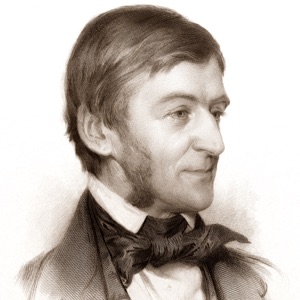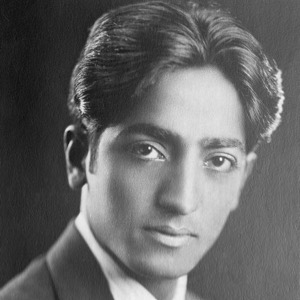The inspiration for the OneJourney Project is self-realization author Guy Finley’s fascinating book, The Seeker, The Search, The Sacred. This book reveals the common thread running through all humanity, allowing us to better understand ourselves and others. Compassion and harmony naturally follow.

For three issues of this newsletter we’re examining each of the basic concepts of the book in turn. Last month we focused on the Seeker. This month we’re looking more deeply at the Search. As I went through the many quotations that touch on this topic, of course many consistent themes appeared. But one that seemed especially powerful to me was the principle of silence. Again and again the great sages spoke of entering inner silence as an essential part of the search for higher wisdom. The truth is waiting for us to find it, but we must go where it can be found — into the silence within. Here is a sampling…
For God alone my soul waits in silence; from him comes my salvation.
— Old Testament
But when you pray, go into your room and shut the door and pray to your Father who is in secret. And your Father who sees in secret will reward you.
— New Testament
A little time alone in your own room will prove more valuable than anything else that could even be given to you.
— Jalal Al Din Rumi
Settle yourself in solitude, and you will come upon Him in yourself.
— St. Teresa of Avila
Silence is a solvent that destroys personality, and gives us leave to be great and universal.
— Ralph Waldo Emerson
The Indian believes profoundly in silence — the sign of a perfect equilibrium. Silence is the absolute poise or balance of body, mind and spirit. The man who preserves his self-hood is ever calm and unshaken by the storms of existence.
— Ohiyesa, Santee Sioux
It is not necessary to go off on a tour of great cathedrals in order to find the Deity. Look within. You have to sit still to do it.
— Albert Schweitzer
It is only the silent mind, the mind that is free, that can come upon that which is beyond time.
— Jiddu Krishnamurti
Sure Steps Towards a Silent Mind
Guy Finley has laid out some helpful principles for finding inner silence in the following question-and-answer-session:
Question: One maxim of self-development I sense is true is that the way out of any stressful situation is to “go through it.” How does this approach apply to reducing stress-producing thought-attacks?
Answer: Everything depends upon our ability to inwardly discriminate between thoughts and feelings that are for us as opposed to those that are against us. Whenever confronted with an onslaught of internal impressions, the most powerful tool you have is to go silent. Step away from the situation inwardly by bringing everything that is going through you into your deliberate field of attention. There is a native unity in a silent mind that is able to both witness and “taste” the thoughts and feelings passing through it. It is this internal field of silence that reveals the character of any impressions and shows them for what they are. It’s hard to make a mistake when your first wish is to see these thoughts and feelings instead of just unconsciously turning your will over to them.

Question: What is the role of thought along this path? Should we only be silent and observe, or should we also consciously use thought to investigate ourselves? It’s obvious to me that there is something wrong with the way I think, but for the life of me, I can’t think towards the problem wisely. Any suggestions you might have about how to “get it right” in my mind and get on the right path will be appreciated.
Answer: Thought cannot resolve the problems created by thought. This would describe the wrong use of thought. But you mustn’t throw the baby out with the bath water. Thought can arrive at the logical finding that it creates both itself and the problems it would escape, and that to look to itself to release itself must be a waste of time. This reasoning is the right use of thought. Beyond this, thought is necessary for our practical use and some creative purposes. Left unattended, thought tends to become part of a machine that constructs a false self. Try to watch your thinking. If pain accompanies your thoughts, see it, and work to drop the thoughts responsible for the pain. They will tell you they are there to free you from the disturbance, but right thinking towards these states reveals that the pain is there because these same disturbing thoughts have managed to drag you into their disturbed world. The more you see the truth of your inner state, the easier it becomes to drop the troubling state and the wrong thinking responsible for it.

Question: In the morning, during my daily quiet time before the rest of the family awakens, I have much trouble concentrating on higher, spiritual ideas. My thoughts seem to race on events from yesterday or what is coming up today. Should I continue trying to battle with these thoughts? When I just try to watch them and learn from them, they seem to eat up most of my allotted quiet time. It is very frustrating for me.
Answer: What you report about all the inner racket is natural for now, so don’t battle this state. Instead of trying to impose silence upon yourself, give your attention to observing all of this movement in yourself. Here’s a small truth that will help you win the real battle: All mental constructions have a limited amount of time they can stand without your support. Withdraw this support and wait them out. They will collapse, and silence will pour in.

Question: Is having a silent mind essential to spiritual development, and what exactly is gained by practicing inner silence?
Answer: True silence is not just the absence of noise; it is a kind of spiritual medium in which not only are we able to discern what is false, but through which what is true can increasingly reach us and teach us. It is very helpful to practice some form of being silent. As you develop a “taste” for inner quiet, you will not only long more for this silent friend, but you will find new ways to bring it along with you wherever you go. The fundamental purpose of spending time in quiet or silence is to make clear to ourselves all of the many relationships that we all are continually experiencing in thoughts and feelings within ourselves without knowing it. As we work at being quiet and stepping back from ourselves, we begin to realize that there is an “I” or sense of self that exists apart from all of this inner company. Eventually, we will find ourselves effortlessly centered within this silent self. When this occurs, and as this occurs, we enjoy the sense of strength and comfort that comes with knowing ourselves apart from any of the temporary inner visitors we formerly took ourselves to be. Keep practicing.
Question: How can I develop a deeper relationship with silence?
Answer: How did you fall in love with anyone the first time? Something about that person captivated you. Something in that person had something — a quality — that nourished you. Falling in love with silence happens naturally as you spend more time cultivating your relationship with her. Within silence is a whole new world, new qualities, and a new order of love. Seek her.
Take time for yourself to enter the silence within you. That is where the search begins, and ends, and begins again, as we enter ever higher levels of understanding.
Best wishes,
Dr. Ellen Dickstein
The OneJourney Project









